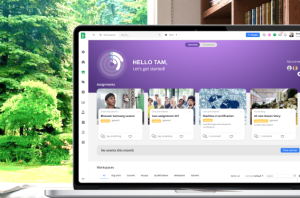Another risk to prepare for in the deployment of your brand-new organisational learning management system is investing too much time into your day-to-day work and not enough time into installing your LMS system.
Another risk to prepare for in the deployment of your brand-new organisational learning management system is investing too much time into your day-to-day work and not enough time into installing your LMS system. Establishing an agreed deployment project timetable is highly recommended.
In our experience, many organisations have continued their everyday tasks while working on the deployment project simultaneously during work time, without hiring any additional staff. This meant the personnel involved in the LMS migration or introduction had to work a considerable amount of overtime.
Let’s consider what the LMS deployment process entails:
- Characterising existing and required processes.
- Learning how to use the new learning management system, and ensuring your colleagues are familiar with it.
- Data analysis, mapping and import.
- Creating content in the system – such as e-learning modules, questionnaires, courses, and tasks.
These all take a considerable amount of time.
View the project as an investment, not an inconvenient expense
These all take a considerable amount of time. How do you achieve all of these without prolonging the project?
With any risk management process, your first priority should be to understand the exact problem or need and then work out how you’re going to handle it. By truly understanding how much time and resource is needed to successfully deploy your LMS system, you don’t underestimate the project and subsequently miss your deadline.
Remember, your Learning Management System will result in a significant reduction of your workload in the future. So put in concentrated effort now and your return on investment will be exponential.
How do you actually prepare for the deployment?
If you’re a medium-sized organisation, which we define as between 250 and 1000 employees), we suggest an investment of two full working days per week, for 3-4 months. Even after the system is live, this project will still require another working day of the week for another 3 months. This one day has the purpose of providing support for the organisation’s complete adaptation to the system.
This is a rule of thumb, and every organisation is different. You can use this as guidance for creating your work plan.
How detailed does this work plan need to be?
- Allocate dedicated time to the deployment
- Specify which team members will be working on what
- Decide what tasks can be achieved from within your organisation and what work needs to be outsourced to meet your deadline
Your orderly work plan should include milestones and schedules, and clear tasks for everyone involved in the work. Communication is key. Arrange weekly/bi-weekly calls with everyone involved in the project to track progress and flag any issues.
This work plan should be in full cooperation with the provider of the Learning Management System. If they’re aware of specific milestones, they can help you achieve this.
What work can be outsourced?
To achieve your work plan, consider ways you can free up time and obtain resources. For both time-saving purposes and for a high quality of work, we suggest outsourcing the creation of e-learning modules if your deployment team are overly stretched. This means professionals are creating your training content. Other example of activities that can be outsourced are data entry, uploading pre-written content, importing history, basically any monotonous admin task. It’s easy to show someone what to do and let them get on with it to save you lots of time.
To meet your everyday work tasks, think about outside-the-box solutions to achieve this, so your deployment team can stay focused on the LMS project.
What about when the plan doesn’t follow the exact work plan?
There’s a possibility that the work plan will change during the project. The work plan should continually be updated when new resource constraints occur, so there’s a solution in place to overcome them.
Following a defined work plan helps you reach your deadline and ultimately provides a larger return on investment. Our next article will detail a risk that occurs when preparing content and materials for the system.
Blossom’s blog contains more tips and information from the digital world for complete organisational management.








